CUAsia 2020: A conference in paradise that stole our hearts
Our experience at CUAsia 2020 can be described as a paradise getaway, with the sun beaming on our booths, which were located on the terrace near-by the Monkey Forest, a sight of nature and exotic animals brought the right dose of excitement. We had an excellent time mingling, engaging in conversations and providing information on our coworking solution.
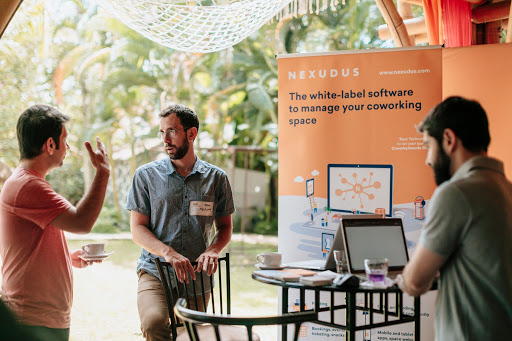
From time to time, we were visited by the monkeys from the Monkey forest, and we couldn't get enough!
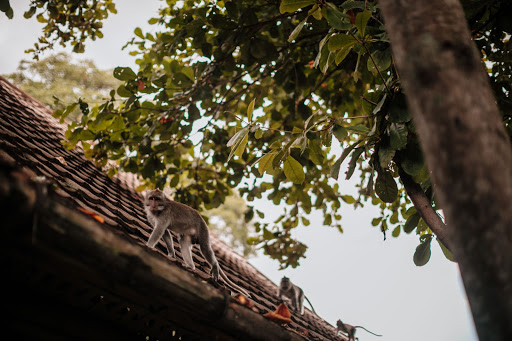
Day one of Coworking Academy:
Our day started with The Coworking Academy, which was hosted by HUBUD coworking space in Ubud, Bali. The academy began with a programme on Coworking Strategy: making your coworking space unique, by Marc Navarro. Then, an exercise focused on how to design a thrilling space by Joana Carvalho. Followed by Developing events as a strategic tool by Aniket Gupta and Pro tips on selling your vision by Alex Hillman. Ikigali, Spaceplexx, Liv.it and HomeTree led the workshops, with participants divided into groups of three working on activities, with each group working on a space separate to theirs.

We worked with the Ikigali team by exploring the best practices in the coworking industry, learning about the critical areas of the coworking space management and gathered information such as the target members, location and spaces' niche. Once completed, we brainstormed and listed pain points and solutions, such as providing soundproof phone booths to reduce noise pollution, providing isolated work areas and terraces for solitude working.
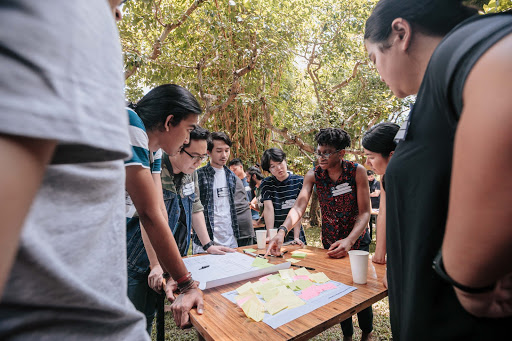
Day two of Coworking Academy
We engaged in exercises that focused on community building and development; our task was to solve problems related to community growth and engagement. This exercise was very operational, we designed engaging and informative solutions, like, having a directory on the wall by the staircase, with the stairs being a point of contact for everyone. This would be a serviceable tactic for members to absorb key information.
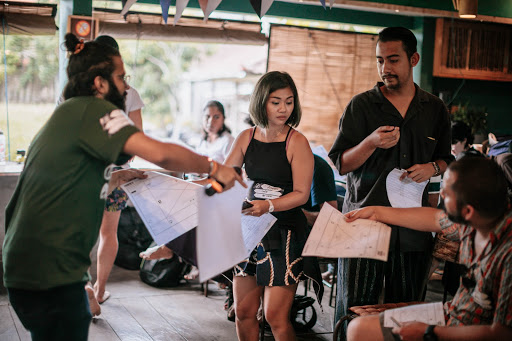
The other idea was to use the wall by the staircase as an open cinema to encourage community engagement and space utilisation. Majority of the coworking space owners were pleased with the ideas and found them feasible and implementable. The Coworking Academy ended with a cocktail and networking party.
Day one of CUAsia conference:
Day one started with the following insightful talks and presentations: Coconut Coworking: What we can all learn from building community in Bali by the co-founders of HUBUD and CUAsia, Steve Munroe and Renee Martyna. What differences does it make: diversity, inclusion and what it brings to the coworking world by the founder of Canoe Coworking, Tara Everett.
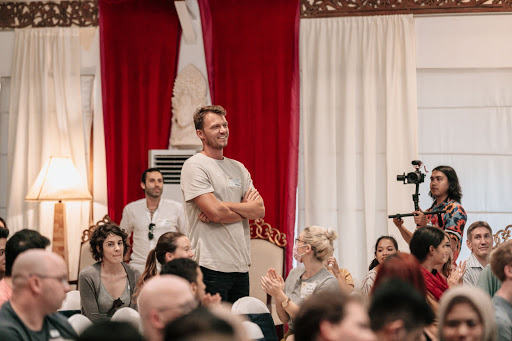
Inspiring workshops and panel discussions followed the presentations, seminars like Coworking as Ecosystem Builder: How to be sustainable beyond your space by Faye Alund. Workshop on Tribe cycles: A tool for observing how a community is created, by Michael Craig. Workshop on Using Art as a tool to problem solve by Susan Allen, and we participated in a panel discussion on Tech Lens, which was moderated by Steve Munroe.
Day two of CUAsia conference:
The day started with a talk on The retrospective on coworking: How it was, what it has become and what we can learn from the last ten years by the CEO of Betahaus, Christopher Fahle. Followed by a presentation on Coworking and Social Innovation by the community creator of Auroville Michael Dieter Salvador and the community manager of CANVAS coworking space, Joy Taylor. The other talk was on Scaling: How do you keep the community focus while scaling from 10 to 500+members?, by the head of strategic projects at Spacecubed, Ophelie Cutler.
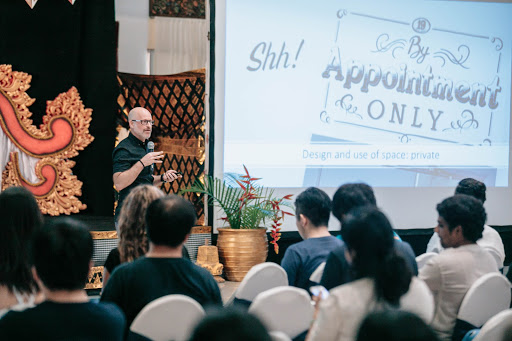
During break time, people participated in our fun pinata game. We had participants hit the pinata -blindfolded- in turns until a lucky winner broke the pinata and won a prize, who knew hitting a pinata could be so much fun!
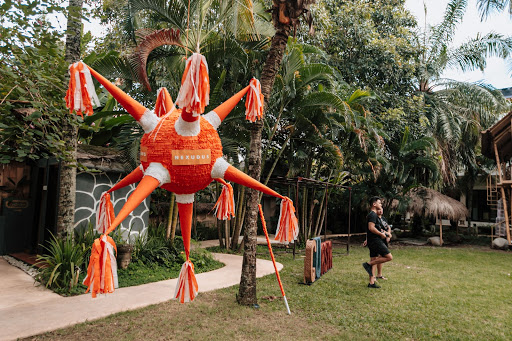

Once the break was over, it was back to business. The LinkedIn Masterclass by Francis Rodino and workshop by Kali Norman on Increasing impact through collaboration went down like a treat, satisfying way to wrap up day two.
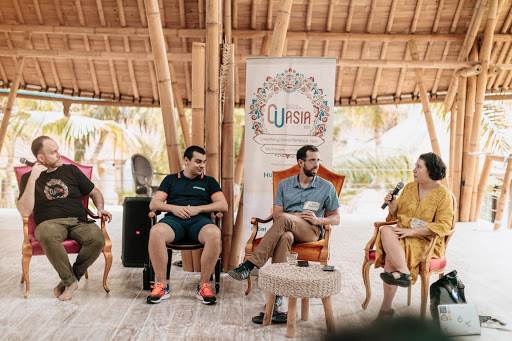
Day three of CUAsia conference:
Unfortunately, all good things must come to an end. The last day of CUAsia 2020 started with an introduction to the social impact and innovation groups, which was hosted by Maria Agustin and Joy Taylor. Followed by a manifesto workshop and three rounds of unconference pitching. Just before saying our farewell, we brought out more prizes and fun with the Nexudus pinata, which was an excellent way to round up such a great event. Our second winner bagged an Ipad and was cheered on by the community of attendees and participants.

CUAsia 2020 gave us more than we needed and stole our hearts; breathtaking temples adorn the city, the citizens were welcoming and warm. We are excited to see what CUAsia has in store for 2021! CUAsia 2020 exceeded our expectations.

Related stories
Global Coworking Trends and Opportunities for 2025
Now well into 2025, the coworking industry continues to demonstrate strong momentum. With demand for coworking spaces remaining steady around the globe, it's clear that coworking is not just enduring—it's thriving. Let’s explore the major trends and opportunities shaping the global coworking landscape this year.
Creating Events that Drive Community Engagement in Coworking Spaces
Community is everything in coworking, but a genuine sense of connection between members doesn’t magically happen overnight or by chance. Often, meaningful relationships take intentionality, effort, and time to build, with events being an effective vehicle for bringing people together around shared interests, goals, and experiences, creating opportunities for collaboration, and a thriving coworking culture. This article looks at creating events that drive community engagement in coworking spaces.
Liz Elam: ‘Community is the number one amenity in coworking spaces’
A household name in the global coworking industry, Liz Elam, is the founder of one of the world’s best coworking event series: GCUC. Liz’s coworking roots began in 2010, when she established Link Coworking – a welcoming, affordable, and professional coworking space – in her hometown of Austin, Texas. Link Coworking achieved incredible success, expanding across three locations and becoming the fourth-largest coworking brand in Austin. It was sold in 2019, making Liz the first woman globally to exit a coworking brand.
Key Takeaways from the Coworking Alliance Summit 2025
Gathering online for the Coworking Alliance Summit last week, members of global coworking alliances, coworking spaces, and community leaders came together to navigate global issues, strengthen ties across the coworking industry, and work collectively towards future goals.
5 Ways to Reduce Noise in Open Offices & Coworking Spaces
Some people like working against a background of noise, while for others it’s their worst work nightmare. The truth is, our relationship with noise depends on our own preferences and the nature of our work.
Key takeaways from the Workspace Design Show 2025
London’s Workspace Design Show is undoubtedly one of the best coworking events of 2025. For one, the exhibition (held at Islington’s Business Design Centre) features a host of innovative and creative workspace design solutions tailored to the needs of modern workplaces.
What Is Workplace Management and Why Does It Matter?
There has always been a need for workplace management – the process of organising and optimising physical spaces, resources, and operations to support people’s needs. But, as 28% of UK working adults were reported to work in a hybrid capacity last autumn (by the Office for National Statistics), the question of ‘why workplace management matters’ is more critical than ever. Let’s look at the workplace management benefits for your operations.
10 Smart Goals for your Coworking Space: How to Set & Achieve Business Objectives
Coworking is synonymous with creativity, collaboration and productivity. Businesses and freelancers love coworking spaces because (by surrounding themselves with fellow workers) they’re more likely to achieve their goals. The coworking environment, while social, is set up to facilitate focused, distraction-free working.
The Best Coworking Events in 2025: Must-Attend Gatherings for Professionals
Managing coworking spaces is an all-encompassing role, often leaving operators, owners, and community managers with little time to focus on personal growth or draw inspiration from others.
10 Award-winning Coworking Space Designs: A Comprehensive Guide
Vibrant, contemporary workspaces create an undeniable ‘wow’ factor. Textured designs and ambient lighting make spaces feel warm and cosy, while natural elements and biophilic design features have literal mood-boosting properties.

